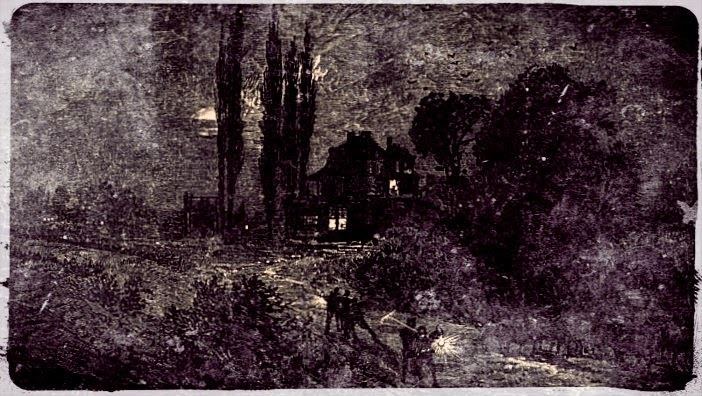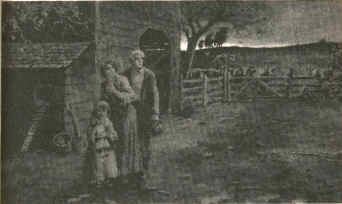Start date May 19, 1780 | ||
 | ||
The folklorist new england s dark day
New England's Dark Day refers to an event that occurred on May 19, 1780, when an unusual darkening of the day sky was observed over the New England states and parts of Canada. The primary cause of the event is believed to have been a combination of smoke from forest fires, a thick fog, and cloud cover. The darkness was so complete that candles were required from noon on. It did not disperse until the middle of the next night.
Contents
- The folklorist new england s dark day
- Range of the darkness
- Progress
- Other atmospheric phenomena
- Religious interpretations
- Cause
- References

Range of the darkness

According to Professor Samuel Williams of Harvard College, the darkness was seen at least as far north as Portland, Maine, and extended southwards to New Jersey. The darkness was not witnessed in Pennsylvania.
Progress

The earliest report of the darkness came from Rupert, New York, where the sun was already obscured at sunrise. Professor Samuel Williams observed from Cambridge, Massachusetts, "This extraordinary darkness came on between the hours of 10 and 11 am and continued till the middle of the next night." Reverend Ebenezer Parkham, of Westborough, Massachusetts, reported peak obscurity to occur "by 12", but did not record the time when the obscuration first arrived.

At Harvard College, the obscuration was reported to arrive at 10:30 am, peaking at 12:45 pm, and abating by 1:10 pm, but a heavy overcast remained for the rest of the day. The obscuration was reported to have reached Barnstable, Massachusetts, by 2:00 pm, with peak obscurity reported to have occurred at 5:30 pm.

At 2:00 pm, in Ipswich, Massachusetts, roosters crowed, woodcocks whistled, and frogs peeped as if darkness had fallen. A witness reported that a strong sooty smell prevailed in the atmosphere, and that rain water had a light film over it that was made up of particles of burnt leaves and ash. Contemporary reports also indicated ash and cinders fell on parts of New Hampshire to a depth of six inches.
Other atmospheric phenomena

For several days before the Dark Day, the sun as viewed from New England appeared to be red, and the sky appeared yellow. While the darkness was present, soot was observed to be collected in rivers and in rain water, suggesting the presence of smoke. Also, when the night really came in, observers saw the moon colored red. For portions of New England, the morning of May 19, 1780 was characterized by rain, indicating that cloud cover was present.
Religious interpretations
Since communications technology of the day was primitive, most people found the darkness to be baffling and inexplicable. Many applied religious interpretations to the event.
In Connecticut, a member of the Governor's council (renamed Connecticut State Senate in 1818), Abraham Davenport, became most famous for his response to his colleagues' fears that it was the Day of Judgment:
I am against adjournment. The day of judgment is either approaching, or it is not. If it is not, there is no cause for an adjournment; if it is, I choose to be found doing my duty. I wish therefore that candles may be brought.
Davenport's courage was commemorated in the poem "Abraham Davenport" by John Greenleaf Whittier.
Today, some Christians, especially those among Seventh-day Adventists citing extracts of Biblically sequential events, "... the sun will be darkened, the moon will not give its light, the stars will fall from the sky..." (Matthew 24:29 (WEB) are signs preceding the return of Christ) and interpretations of the event as cited by Ellen G. White, believe that the Dark Day was a fulfillment of Biblical and end-times prophecy. Also see Revelation 6:12–13 "... and there was a great earthquake. The sun became black as sackcloth made of hair, and the whole moon became as blood. The stars of the sky fell to the earth, like a fig tree dropping its unripe figs when it is shaken by a great wind." One prominent Seventh-Day Adventist, Arthur S. Maxwell, even mentions this event in his The Bible Story series (Vol. 10). Some Progressive Adventist scholars do not interpret this as a sign that Jesus will soon return. Traditional Historic and Conservative Adventists, who hold Ellen White's writings in higher regard, still consider this date as one of the fulfillments of biblical prophecy.
Cause
The likely cause of the Dark Day was smoke from massive forest fires. When a fire does not kill a tree and the tree later grows, scar marks are left in the growth rings. This makes it possible to approximate the date of a past fire. Researchers examining the scar damage in Ontario, Canada, attribute the Dark Day to a large fire in the area that is today occupied by Algonquin Provincial Park.
